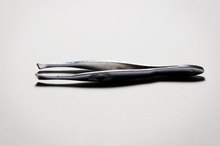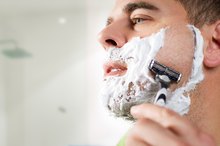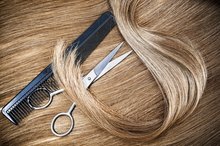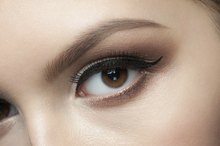What does fact checked mean?
At Healthfully, we strive to deliver objective content that is accurate and up-to-date. Our team periodically reviews articles in order to ensure content quality. The sources cited below consist of evidence from peer-reviewed journals, prominent medical organizations, academic associations, and government data.
The information contained on this site is for informational purposes only, and should not be used as a substitute for the advice of a professional health care provider. Please check with the appropriate physician regarding health questions and concerns. Although we strive to deliver accurate and up-to-date information, no guarantee to that effect is made.
How Do Dermatologists Treat Facial Hair on Women?
Introduction
The growth of hair on the face, underarms, arms and legs is something that is shared by both men and women alike. Unfortunately, for most women, noticeable hair in these places is not a desirable trait. When methods such as shaving, waxing and depilatory removal creams reach their limits, many women choose to turn to their dermatologist for a more permanent solution.
Laser
Laser hair removal is one popular option provided by dermatologists. Laser hair removal works by using a specialized laser that penetrates into the deeper layers of the skin. By using the pigment of the hair as a guide, the laser targets the hair follicle and uses the heat of the laser to disrupt the hair's ability to grow.
Although some clinics may try to pass off laser hair removal as permanent, according to the Food and Drug Administration (FDA), laser hair removal can only be advertised as permanent reduction, not permanent removal 1. This is due to the laser's inability to 100 percent target and destroy hair in all skin and hair types. Laser hair removal typically works best for those with light skin and dark hair, and may take several treatments before significant results are seen.
- Laser hair removal is one popular option provided by dermatologists.
- Laser hair removal typically works best for those with light skin and dark hair, and may take several treatments before significant results are seen.
Electrolysis
How to Stop Body Hair Growth in Men
Learn More
Electrolysis is another option that your dermatologist may recommend for the removal of hair. During electrolysis, a small needle-like probe is placed into the hair follicle. Once in the hair follicle, the probe delivers a small shock, which is enough to kill the follicle. According to the FDA, since the hair follicle is destroyed, it can be considered a permanent hair removal option.
- Electrolysis is another option that your dermatologist may recommend for the removal of hair.
- According to the FDA, since the hair follicle is destroyed, it can be considered a permanent hair removal option.
Prescription
One newer product to reach the hair removal market is the prescription topical cream Vaniqa. Vaniqa uses the active ingredient eflornithine hydrochloride to interfere with enzyme production. The enzymes that Vaniqa targets are responsible for the cell reproduction needed to create the hair shaft. Vaniqa must be prescribed by your dermatologist, and is applied twice a day. The product only works as long as you are using it, and regular hair growth will return within eight weeks after stopping the product's use. Vaniqua is an FDA-approved product for hair removal.
- One newer product to reach the hair removal market is the prescription topical cream Vaniqa.
Related Articles
References
- Food and Drug Administration: Removing Hair Safely
- Internet Drug Index: Vaniqa
- TeensHealth from Nemours. Hair removal. Updated August 2016.
- National Organization for Rare Disorders. Trichotillomania.
- NIH MedlinePlus. Depilatory poisoning. Updated April 9. 2020.
- Michigan Medicine. Electrolysis for removing hair. Updated October 30, 2019.
- American Academy of Dermatology. Laser hair removal: FAQs.
- USFDA. Vaniqa™. Updated July 27, 2000.
- Hamzavi I, Tan E, Shapiro J, Lui H. A randomized bilateral vehicle-controlled study of eflornithine cream combined with laser treatment versus laser treatment alone for facial hirsutism in women. J Am Acad Dermatol. 2007;57(1):54-9. doi:10.1016/j.jaad.2006.09.025
- Hamzavi, I., Tan, E., Shapiro, J., Lui, H. (2007). A randomized bilateral vehicle-controlled study of eflornithine cream combined with laser treatment versus laser treatment alone for facial hirsutism in women. J Am Acad Dermatol, Jul, 57, 1, 54-9.
- Wanitphakdeedecha, R., Alster, T.S. (2008). Physical means of treating unwanted hair. Dermatol Ther, Sep-Oct, 21, 5, 392-401.
Writer Bio
Chris Sherwood is a professional journalist who after years in the health administration field and writing health and wellness articles turned towards organic sustainable gardening and food education. He now owns and operates an organic-method small farm focusing his research and writing on both organic gardening methods and hydroponics.









